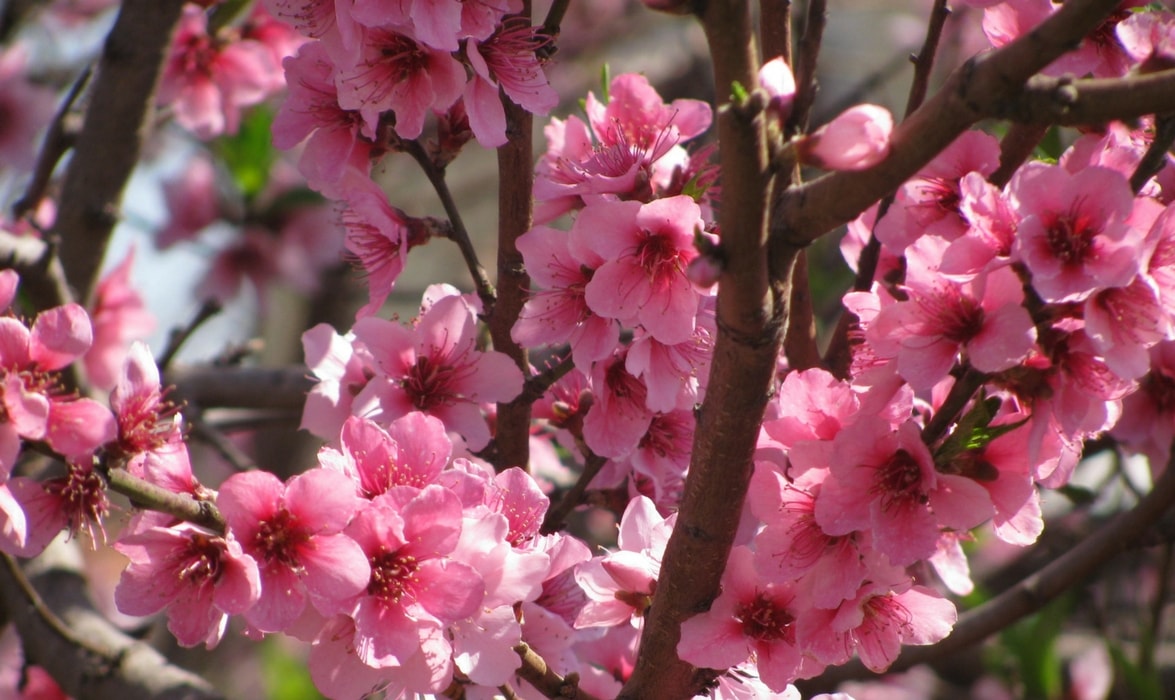
Pollination of fruit trees
Principles and Choices of Pollinating Fruit Trees
Contents
When we talk about pollinators, we first think of foraging insects, primarily bees. Indeed, their role is crucial for the pollination of flowers on fruit trees. However, we also refer to pollinating varieties for fruit trees: a bee can forage on many flowers of an apple tree, but if it doesn’t have the right pollen in its hairs, fertilization and the formation of the apple may not occur!
Often, a fruit tree must have another tree of the same species nearby to enable fertilization and fruit formation. What does good pollination allow? What is a self-fertile variety? And a self-sterile one? What is the role of insects? What is incompatibility? And above all, which pollinating varieties should you choose for your fruit trees? Discover the answers to all these questions in this article!
Self-fertile or self-sterile fruit trees? The lowdown!
To produce fruit, a fruit tree needs to be pollinated. Good pollination is therefore essential for production, as well as for increasing the yield and quality of the fruit. Indeed, well-pollinated and fertilised fruits have better fruit set (this term refers to the transformation of the flower’s ovary into fruit), the fruits are less deformed and more resistant to climatic variations. In the garden, and particularly in the orchard, it is important to consider pollination when choosing, purchasing, and planting fruit trees.
Let’s start by examining what the terms self-fertile, self-sterile, as well as hermaphrodite, monoecious, and dioecious mean…
1) Hermaphrodite, self-sterile, and self-fertile fruit trees
Among hermaphrodite fruit trees (each flower bears both male and female organs), we distinguish between self-sterile varieties (or allogamous) that require pollen from another variety to be fertilised, and self-fertile varieties (or autogamous), which can fertilise themselves with their own pollen.
It is worth noting that even among self-sterile varieties, the presence of other varieties can enhance pollination.
Here is a summary table of self-sterile and self-fertile fruit trees.
| Self-sterile fruit trees | Self-fertile fruit trees |
| Almond tree
Cherry tree Apple tree Pear tree Plum tree |
Apricot tree Sour cherry tree Quince tree Fig tree (common type) Mulberry Peach tree Plum tree Vine Elderberry |
To complicate matters, there are sometimes both self-sterile and self-fertile varieties within the same species, for example in plums. Recent varieties are increasingly selected to be self-fertile, so we see new self-fertile varieties emerging in groups that are predominantly self-sterile, such as in apples.
In the case of self-sterile fruit trees, your garden (or your neighbours’) must host different varieties to ensure good pollination. It is important that the flowering of these multiple varieties occurs at the same time! However, there is an additional caveat, incompatibility due to pollen. Some fruit trees of the same species, even if they flower at the same time, may be incompatible, as the pollen from one poorly fertilises the pistil of the other. Therefore, it is essential to choose compatible varieties. Incompatibility affects pear trees, plum trees, and cherry trees, but less so apple trees.
Moreover, one should not confuse the earliness of the fruit with the flowering period. Indeed, two varieties of fruit trees may flower at the same time, but one may have an early harvest while the other is late.
2) Monoecious and dioecious fruit trees
The kiwi (in the vast majority of varieties) is a some plants bear only female flowers while others bear only male flowers. It is therefore essential, for the pollination of this species, to have both female trees (which will bear the fruit) and male trees (for pollen only).
The monoecious fruit species bear distinct flowers on the same plant: only female flowers and only male flowers. It is common for female and male flowers not to mature at the same time; in this case, several varieties are recommended for good pollination. This is the case with the hazel tree.
Read also
Best melliferous plants by seasonThe role of insects in the pollination of fruit trees
The fruit trees we cultivate are entomophilous, meaning that insects are their pollination vector. In fact, it is a very important vector: an apple tree isolated from insects but not from the wind will produce 12 times fewer apples than an apple tree accessible to insects, even when two compatible varieties are side by side.
Why and how to encourage their presence in the garden?
Encouraging the presence of insects is therefore essential for better production. The “best” pollinating insects (the most effective) for fruit trees are bees (both domestic and solitary) and bumblebees. Of course, many beetles, butterflies, flies, and mosquitoes also contribute, albeit to a lesser extent, to the transport of pollen between flowers of different varieties.
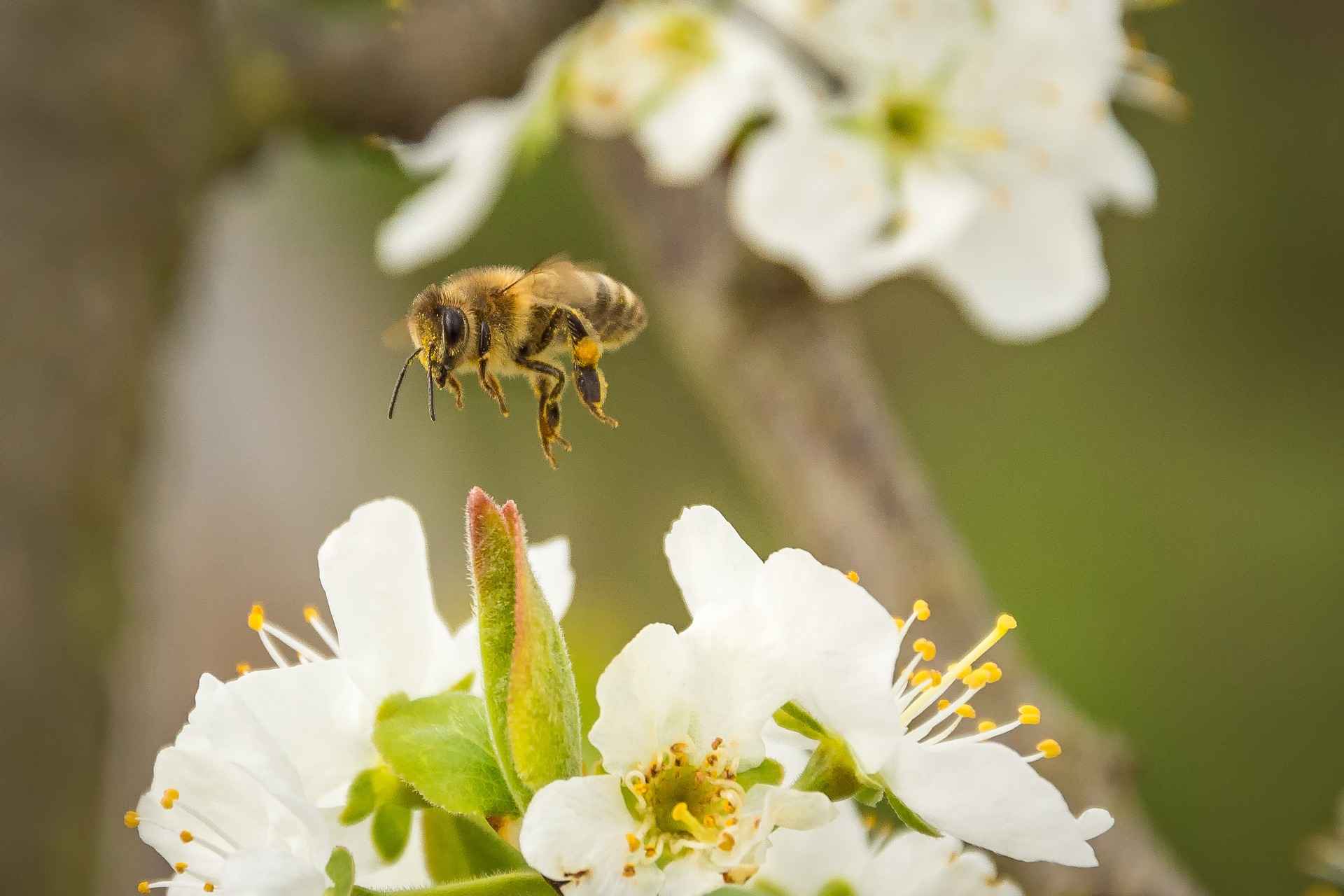
Pollinators need a wide diversity of flowering plants. In many vegetable gardens and orchards, flowering plants are not sufficient throughout the year. It is beneficial to provide them with food over a long period of the year. To achieve this, do not hesitate to sow and plant a variety of trees, bushes, and flowers.
It is also good to encourage natural areas, to create country hedges, flowering strips, and to provide shelter for insects by offering piles of stones, compost heaps, bundles of hollow stems, and why not, insect hotels.
Discover other Fruit trees
View all →Available in 0 sizes
Available in 1 sizes
Available in 1 sizes
Available in 1 sizes
Available in 1 sizes
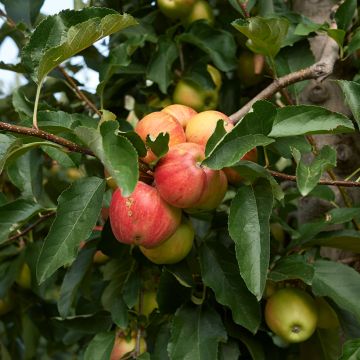
Available in 1 sizes
Available in 1 sizes
Available in 1 sizes
Available in 1 sizes
Available in 1 sizes
Apple Pollination - Summary Table
The apple tree produces flowers that bloom for about 15 days. They produce a lot of nectar and pollen that attracts numerous pollinating insects. The apple tree is a highly self-sterile species, requiring pollinating varieties for good fruiting.
| Variety | Flowering | Pollinating variety |
| Antares | April | Golden Delicious, Idared, Granny Smith, Reinette |
| Ariane | April | Royal Gala, Reinette, Golden |
| Belle de Boskoop | April | Golden, Starking Delicious, Reinette, Idared |
| Belle Fille de Salins | Mid-May | Reinette de Brive |
| Calville Rouge d’Hiver | Mid-April | Reinette, Golden Delicious |
| Choupette | April (long flowering) | Antares®, Goldrush®, Golden Delicious, Granny Smith, Reinette, Red Delicious, Braeburn, Elstar, Fuji and Idared. |
| Ballerina® Bolero | March | Ballerina® Maypole |
| Ballerina® Valse | March | Ballerina® Maypole |
| Ballerina® Polka | March | Ballerina® Maypole |
| Ballerina® Maypole | March – April | Ballerina® Bolero, Valse, Polka |
| Cox’s Orange | Mid-April | Calville blanche d’hiver, Jonathan, Reinette |
| Rhapsodie | March – April | Ballerina® Maypole, Reinette |
| Rondo® | March – April | Ballerina® Maypole, Reinette |
| Cybèle® Delrouval | April | Delbarestivale, Régali, Royal Gala, Reinette, Delbard Jubilé |
| Delbard Jubilé® Delgollune | April | Régali®, Delbarestivale®, Cybèle®, Harmonie®, Pomme des moissons®, Royal Gala®, Reinette |
| Delbarestivale® Monidel | Mid-April | Tentation, Royal Gala, Delbard Jubilé |
| Elstar | April | Gala, Golden Delicious, Cox Orange, Reinette, Granny Smith, Belchard, Melrose |
| Fuji | April | Golden Delicious, Granny Smith, Gala, Topaz |
| Golchard ® | April | Starking Delicious, Golden Delicious, Granny Smith |
| Golden Delicious | April | Reinette, Granny Smith, Starking Delicious, Melrose |
| Grand Alexandre | April | Golden Delicious, Granny Smith |
| Granny Smith | March – April | Melrose, Idared, Golden Delicious |
| Jonagold | April | Starking Delicious, Melrose, Reinette, Ingrid Marie |
| Maggy® | April | Reinette, Golden |
| Melrose | April | Golden Delicious, Granny Smith, Reinette |
| Mondial Gala | April | Granny Smith, Golden Delicious |
| Croquella® delgrina | April – May | Self-fertile |
| Garden Sun Red® | April | Self-fertile |
| Rambour d’Hiver | April | Reinette |
| Regali | April | Royal Gala, Delbard Jubilé, Harmonie, Tentation |
| Reinette | April | Golden Delicious, Idared, Melrose |
| Reinette de Brive | May | Reinette de Caux, Reinette, Golden Delicious |
| Reinette de Caux | April | Reinette |
| Reinette du Mans | April – May | Reinette |
| Reinette Grise du Canada | April | Granny Smith, Reinette, Idared, Golden Delicious |
| Royal Gala | April | Elstar, Reinette, Granny Smith, Golden |
| Winter Banana | Late March | Calville Blanche Hiver, Idared, Golden Delicious |
Discover our wide range of apple trees for a diverse orchard in varieties!
Pear Pollination - Summary Table
Pear trees produce flowers that bloom over a period of one to three weeks depending on the varieties. Their flowers produce a lot of pollen but little nectar, which is also not very sweet, making it attractive to few pollinating insects. The pear tree is a highly self-sterile species and requires pollinating varieties for good fruiting.
| Variety | Flowering | Pollinating variety |
| Angelys® | April | William’s, Conference, Doyenné du Comice |
| Delbardélice® Délété | April | Williams, Beurré Hardy, Peradel®, Fertilia Delbard® |
| Beurre Hardy | April | William’s, Conference, Doyenné du Comice, Louise Bonne |
| Conference | March – April | Doyenné du Comice, Général Leclerc |
| Deveci | March – April | William’s |
| Doyenné du Comice | April | William’s, Conference |
| Duchesse d’Angoulème | March | William’s, Louise Bonne |
| Garden Pearl | March | self-fertile |
| Garden Gem® Pyred | March | self-fertile |
| Jules Guyot | April | William’s, Conference, Général Leclerc |
| Louise Bonne | March | William’s, Conference |
| Super Comice Delbard®Delbias | April | William’s, Beurré Hardy, Comtesse de Paris, Fertilia Delbard® |
| Marguerite Marillat | March | William’s, Comtesse de Paris, Conference, Louise Bonne |
| St-Jean | March | William’s, Louise Bonne |
| Sucrée de Montluçon | April | Williams, Beurré Hardy, Conference, Delbard d’Automne®, Fertilia Delbard® |
| Obelus® | March | Angelys®, Doyenné du Comice |
| William’s | April | Doyenné du Comice, Conference, Packams, Guyot, Giffard, Général Leclerc, Angelys®, Alexandrine Douillard |
| William’s Rouge | April | Doyenné du Comice, Conference |
Discover our range of pear trees: classic varieties as well as more original ones like the Nashis!
Plum Pollination - Summary Table
The plum tree produces an early flower that blooms for about 2 to 3 weeks and produces a variable amount of nectar, attracting many pollinators due to the early flowering. Plum varieties are self-fertile and self-sterile, but the presence of various varieties always increases fruiting.
| Variety | Flowering | Pollinator variety / self-fertility |
| Mirabelle de Metz | March | Reine-Claude dorée or Reine-Claude d’Althan |
| Mirabelle de Nancy | Early April | self-fertile |
| Golden Japan | March | Methley |
| Miraclaude® | March-April | self-fertile |
| Goldust® | April | self-fertile |
| Prune d’Ente (pruneau d’Agen) | April | self-fertile and good pollinator |
| Victoria | March (spreading) | self-fertile and good pollinator |
| Quetsche d’Alsace | April | self-fertile |
| Quetsche Stanley | Late March | self-fertile and good pollinator |
| Reine Claude d’Oullins | Mid-March | self-fertile and good pollinator |
| Reine Claude de Bavay | Mid-March | self-fertile and good pollinator |
| Reine Claude Dorée ouverte | April | Reine Claude d’Oullins or Mirabelle de Nancy |
| Thames Cross | Late March | self-fertile |
| Crimson Glo | April | Myrobolan |
| Reine Claude d’Althan (violette) | April | Reine Claude dorées and Reine-Claude d’Oullins |
| Quetsche Blanche de Létricourt | April | self-fertile |
Discover our range of plum trees: Reine-Claude, Quetsche and Mirabelles!
Cherry Tree Pollination - Summary Table
The cherry tree produces a flower that blooms for about 10 days and produces a lot of nectar, thus attracting many pollinators. The cherry tree is a highly self-sterile species, requiring pollinator varieties for good fruiting. The effective range of a pollinator variety is within a radius of 20 to 30 metres.
An important warning regarding significant pollen incompatibilities in cherry species; be sure to respect the pollinator varieties at the time of planting.
| Variety | Flowering | Pollinator varieties / self-fertility |
| Belle Magnifique | March – April | self-fertile, fruits better if planted next to Burlat, Reverchon, Marmotte, Napoleon |
| Bigalise® Enjidel | March – April | Burlat, Sweetheart® |
| Burlat | March – April | Napoleon, Reverchon, Van |
| Canada Giant® | March – April | Hedelfingen |
| Cœur de Pigeon | April | Napoleon, Burlat |
| Délice de Malicorne | March – April | Burlat, Belle Magnifique |
| Hedelfingen | April | Summit, Van |
| Marmotte | March – April | Burlat, Reverchon |
| Napoléon | March – April | Burlat, Van |
| Reverchon | April | Napoleon, Burlat, Hedelfingen |
| Stark Gold | March – April | self-fertile, fruits better if planted next to Burlat |
| Sweetheart® | March – April | self-fertile |
| Van | March – April | Napoleon, Burlat |
| Early Rivers | March – April | Burlat, Reverchon, Marmotte, Napoleon |
| Cherry Boop® | March – April | self-fertile |
| De La Saint-Jean® Gardel | March – April | self-fertile |
| Garden Big® | March – April | self-fertile |
| Hâtif Delbard® Rivedel | March – April | Burlat, Décile de Malicorne |
| Summit | March – April | Napoleon, Van, Hedelfingen |
Discover our range of sweet and sour cherry trees.
Kiwi Pollination - Summary Table
Kiwi is a dioecious species, at least for the vast majority of varieties. Female plants bear the fruits while male plants provide the pollen. One male plant is needed for every five to six female plants. Some recent varieties are self-fertile (male and female flowers on the same plant) and can be planted alone.
| Female variety | Corresponding male pollinator variety |
| Hayward | Atlas, Tomuri |
| Wonder | Tomuri |
| Minkigold | Minkimale |
| Golden Delight | Golden Delight |
| Ken’s Red (kiwifruit) | Issai (kiwifruit) |
Self-fertile kiwi varieties:
- Solissimo
- Jenny
- Issai (Kiwifruit)
Discover our range of kiwi and kiwifruit, male and female varieties, and self-fertile varieties.
Useful resources
- This excellent document lists nearly 200 trees, bushes, and single flowers, organised by flowering period and for their nectariferous and pollen-producing interest.
- Subscribe!
- Contents
































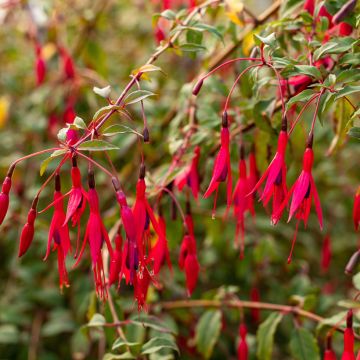
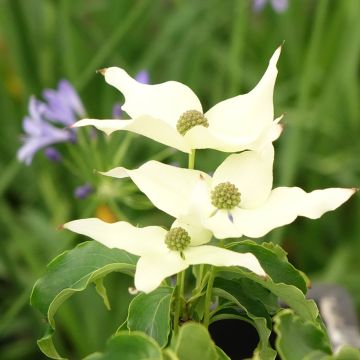
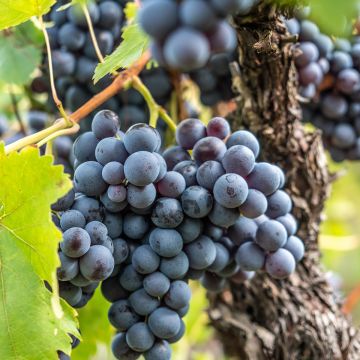

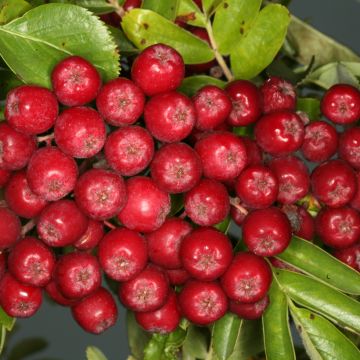
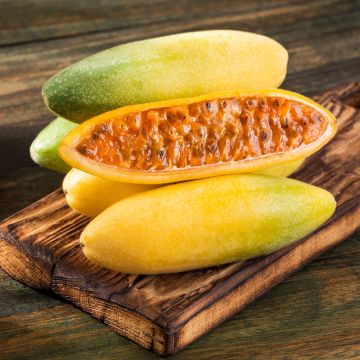

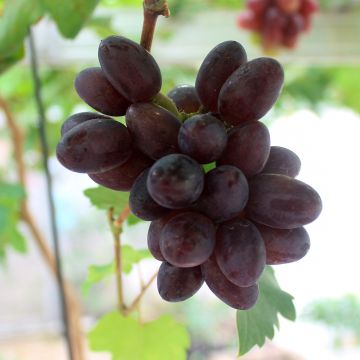
Comments